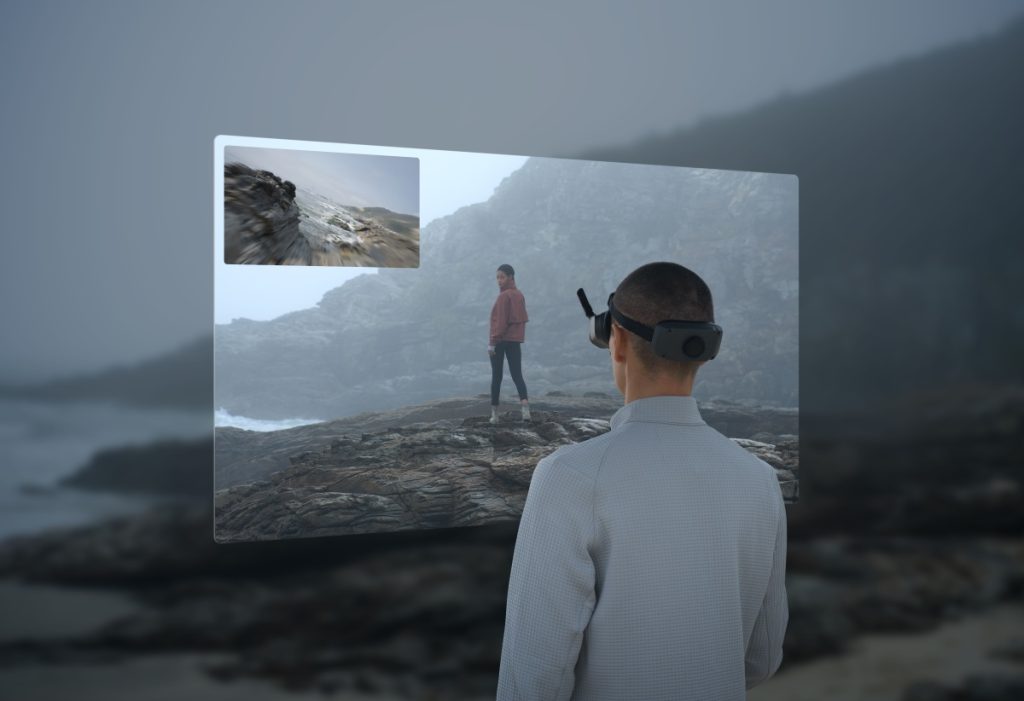
The newly released DJI Avata 2 is meant for those who want to add an element of excitement to their flying sessions. Promising safety, sharp imaging, and immersive flight experience, DJI’s latest first-person view (FPV) drone is designed to be paired with the new DJI Goggles 3 video headset and DJI RC Motion 3 joystick remote controller. But how exactly is Avata 2 different from DJI Avata? Here’s a detailed guide to help you understand just that…
DJI Avata 2 vs. DJI Avata: Key differences
| DJI Avata 2 | DJI Avata |
| Easy acrobatics: Flip, Roll, 180° Drift | No one-push creative maneuvers |
| 1/1.3-inch CMOS super-wide-angle camera | 1/1.7-inch CMOS super-wide-angle camera |
| 4K/60fps HDR videos | 4K/60fps videos |
| 10-bit D-Log M color mode | D-Cinelike color mode |
| Downward/backward visual positioning | Downward visual positioning |
| 23-min max flight time (Avata 2 also supports PD fast charging) | 18-min max flight time |
| DJI O4 video transmission Max transmission distance: 13 km Max transmission bitrate: 60Mbps | DJI O3+ video transmission Max transmission distance: 10 km Max transmission bitrate: 50Mbps |
| 46GB large internal storage with high-speed QuickTransfer | 20GB internal storage |
Overall, Avata 2 offers a safer and more enhanced FPV flight experience. More specifically, you get an expanded sensor to capture 4K/60fps HDR footage in vivid detail, which is a notch above the original Avata’s capabilities. Avata 2 further embraces a 10-bit D-Log M color profile, which translates into a broadened color spectrum and nuanced tonal control in the post-production process.
Avata 2’s safety features are also improved, beginning with a sleeker integrated propeller guard that allows for more agile and freer navigation in tight spaces. In addition, you get new binocular fisheye sensors that enhance flight safety and stability in low-altitude or indoor flights. For an extra layer of security, the automatic Return to Home (RTH) function is initiated when the drone’s battery is low or in case of signal loss. Plus, you can leverage a “Turtle mode” that automatically flips the drone back into takeoff position if it has somehow managed to land on its back.
Read more: New Insta360 X4 camera delivers incredible 360-degree views in 8K
The upgraded DJI Goggles 3, meanwhile, comes equipped with Real View PiP, a feature that keeps you aware of your physical environment while immersed in flight, enhancing both safety and the experience. Its micro-OLED display delivers crisp visuals and near-zero latency for a vivid, real-time view of your flight. Combined with RC Motion 3’s intuitive design that turns complex maneuvers into simple, one-push actions, flying DJI’s new FPV drone becomes an “all thrills, no frills” affair.

RC Motion 3 also gives new pilots the power to perform difficult aerial acrobatics with ease. These include 360-degree front/back flips, 360-degree left/right rolls, and high-speed lateral drifts spinning 180-degree past objects and pulling swiftly away. So, in addition to capturing expansive, scenic views, you can look forward to a different kind of thrill while flying the Avata 2.
Moreover, Avata 2 comes loaded with 46GB of space, which is a welcome upgrade from the previous 20GB of Avata.
All in all, the beginner-friendly Avata 2 is here to make advanced FPV flight more mainstream than ever. You can read our detailed review of the drone here.
Also read: New firmware updates for DJI Mini 4 Pro, Air 3 drone models
FTC: We use income earning auto affiliate links. More.






Comments